MBDA has delivered the first batch of ASTER air defence missiles under a fast-tracked production initiative led by the Organisation for Joint Armament Cooperation (OCCAR), marking a key milestone in Europe’s drive to bolster its defence industrial output.
The Franco-Italian defence group delivered the munitions less than two and a half years after the joint order was placed. The programme, which includes France, Italy and the United Kingdom, aims to produce nearly 1,000 ASTER missiles to replenish and enhance European air defence stockpiles.
According to MBDA, this first batch represents only the beginning. The company has committed to more than halving ASTER production lead times by 2026 and delivering five times more units in 2025 than initially planned.
“The delivery of the first ASTER missiles that benefited from significantly reduced production times is a success for all MBDA teams,” said Eric Béranger, CEO of MBDA. “It demonstrates our commitment to working alongside our customers to ensure the ramp-up of our industrial facilities and the strengthening of our defence industrial and technological base.”
The acceleration follows the signing of additional contracts in February 2025 that supplemented the original December 2022 order. The latest agreement formalised fast-tracked procurement for all three partner nations and reflects growing urgency to restock and modernise integrated air defence systems.
MBDA has made significant capital investments to support the effort. Key production sites in Bourges and Selles-Saint-Denis in France, and Fusaro in Italy, have been expanded. The firm has also stockpiled raw materials, recruited new personnel, and supported supply chain partners to meet heightened demand.
Between 2023 and 2025, MBDA expects to double its overall missile output. Looking ahead, the company has committed to investing €2.4 billion between 2025 and 2029 to ensure sustainable growth and resilience in its missile production capacity.
ASTER missiles, which form the core of the Franco-Italian SAMP/T and PAAMS air defence systems, have seen recent operational deployment in contested environments such as the Red Sea and Ukraine. The ramp-up is expected to ensure that France, Italy and the UK maintain and expand their strategic capacity to defend airspace and support NATO missions.
The initiative underscores broader efforts to reindustrialise European defence after decades of atrophy and in the face of renewed geopolitical pressure.



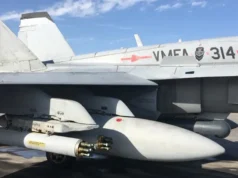

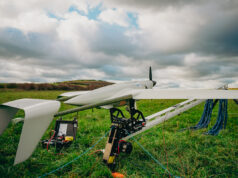
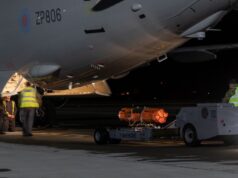
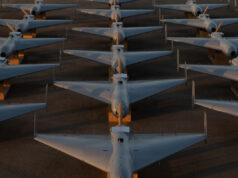
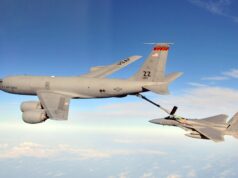
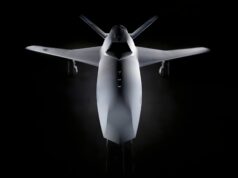

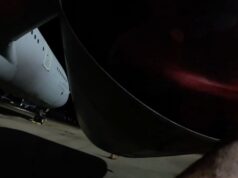
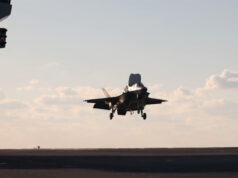

This is an excellent example of the urgency required to get NATO rearmed. I’m still to be convinced we have a joint linked-up effort across the alliance, but the UK, Germany and France do show signs of waking up and smelling the coffee. The UK should see an effort to speed up the Type31’s, though the T26’s will probably stick to the current ISD. As for Tempest, once the demonstrator is completed, it may spur on the consortium to hasten the development with additional funds and facilities. As for heavy armour, Germany plans to manufacture 1000+ additional MBTs whilst the UK believes 148 CH3 is still a viable fleet, (can anyone explain how two member states can be so at odds on the value of heavy mass?)
UK is an Island.
Germany is close to Russia on the continent.
UK start to lack money.
Germany have a great room for insane purchase, even if they can’t crew these, but even so, they could still resell them to others.
And if Russia manage to push past all the thousands of German and French tanks and reach Calais, whether we have 143 CH3, or 250, or 500, won’t make a difference.
Then why buy any C3s at all?
I tend to agree with you. With the sky darkened by swarms of drones, what use are tanks as a defensive measure?
But Starmer thinks he might need them to keep us free-thinkers down.
I’m 50/50 on that.
Tanks still provide good mobile fire support, in a way that artillery can not and a fully static defence isnt realistic.
In war there will always be losses but sometimes you need to just punch through something only tanks can provide. Losing a load isn’t ideal when you have so few but having some is better than nothing.
Drones can currently tear through them, but that is because defensive tech hadn’t kept up with the new threat. If in 5-10 years there is a way to fully mitigate the threat, then tanks again come into their own.
My overall thinking is I wouldn’t currently invest heavily in tanks, but I might consider keeping some to give Generals options, and in case warfare changed again, which it always does.
I see irony is lost on you. You do realise that the British Army won’t be fighting Russia in southern England, I suppose?
Irony only works if the recipient spots it.
And if Russia reaches Calais, don’t expect them to stay there. Next stop Southern England.
Ok. Some realism please. Russia has a population of what 140 million. European NATO has 500 million. European NATO has 4x the GDP of Russia.
There is literally no way on god’s green earth the Russians are steamrolling through Europe and reaching the channel. Hell they can’t even cross Ukraine.
I would however prefer the MOD to get real with the numbers game. Attrition is the killer of our armed forces. Sure we’ve got great exquisite kit and highly trained personnel but not enough of either.
Mr Bell: I couldn’t agree more.
The reality is that Russian expansionism is motivated by demography. Russia intends to dominate Europe as, once, the USSR, a 250 million strong superpower, dominated the domestic and foreign policies of Europe. A union state of Russia, Ukraine, Belarus, Moldova and the Baltic States will very much resemble the USSR in demographic scale and power, influence. They have no need, as the USSR had no need, to steamroller through Europe in order to dominate Europe. A credible conventional deterrent is required simply to give Europe the backbone to stand up to Russian threats and bluster. Without it, make no mistake, Putin or his successors will, timeframe as deemed expedient, seize the Suwalki corridor, cut off thr Baltic States and bring down a new iron curtain from Kaliningrad to Odessa.
In view of that, our allies might be forgiven for thinking that Britain’s single
Armoured Brigade might be a teensy weensy bit on the inadequate side….
The fact that Germany is closer to Russia makes no difference; the UK’s MBT fleet will not fight on UK soil, but will deploy on the European mainland. Before the Germans’ announcement about considerably boosting their tank force, the CH3 fleet number could just about hold water in terms of NATO fleet mix. However, now the status quo could be changing with the prospect of 1,000+ additional brand new MBTs for the Bundeswehr; the 148 CH3 suddenly looks positively feeble. Immediately, this will place the British contribution in any major heavy armour operations in Europe as initially effective, but on a limited basis. The two tank regiments, along with a small war reserve, place the UK as having reduced value in any protracted conflict. In the next 4-5 years, Germany will hold the whip hand in terms of armoured strength, thus rendering the UK’s MBT operations to a support status. This will inevitably result in less strategic influence in some key areas of heavy armoured operations. If the UK is happy with such a prospect, then okay, but playing third or fourth fiddle within NATO land forces might not sit comfortably within Whitehall.
Hi, Maurice, don’t forget Poland. I think they have 350 K2s with a further 820 in the pipeline, 150 M1s with a further 200 in the pipeline and 220 Leo 2s. Then on top of that 175 K9s with 600 to start production and upto 170 Krabs undergoing production, 290 K239s have been ordered as well as 506 Himars. These figures do not include legacy systems. Combine this armoured force with what Germany is planning and the only real use that I can see for our 148 Ch3s is to reinforce Norway/Sweden.
This is where the Uk can be really useful. To leave main land Europe to the major European countries Poland, Germany, France etc and the UK takes the lead in supporting Norway/Sweden/Finland.
I have no military experience so as ever I bow to others that have, but as I understand it if the shit hits the fan between NATO and Russia then the UK’s main role is to keep the North Atlantic and the North Sea clear and safe for US reinforcements and commercial supplies to arrive. For that we need sea and air forces. Also to support Norway, for which we have the Commandos (although with Sweden and Finland now with us that may not be so necessary). But not to provide big bulk to the European land army. That is someone else’s responsibility.
The question then is, what is the role of the British Army in NATO? It seems to me it’s neither fish nor fowl. It has no big strategic purpose – a bit here, a bit there, some home defence – but nothing it can get its teeth into. Which may be why there are these regular circular debates about how many CH3, Ajax, etc, we need and why the Army comes across as a somewhat headless.
Ron, we are missing the point hear if I might be so blunt. My issue is more political than our physical armoured strength, as the UK Government does not see itself as a third party within NATO but a significant driving force at its heart, and the notion that it can help on the periphery might be the cold truth, but that is not how the UK views its role. The prospect of Poland and Germany becoming a powerful collective would make Churchill spin in his grave, and it does not sit well with me either. Due to the Ukrainian War, we may be witnessing a resurgence of powerful elements at the very centre of Europe and in the wrong hands, could spell real dangers.
Historically, the UK has never been a huge land force compared to other continental powers. It is somewhat logical that the UK, having to support continental power, focuses more on swift units like air forces and, being an island, on its fleet to secure the north.
Ideally, you want an army with everything. But the UK, and not only the UK already has recruitment issues (I don’t understand how Poland and Germany think they will be able to crew these platforms). So, ordering a vast amount of a costly system that is not your priority is not a wise move. We have to make choices in our forces. We don’t have the money or people to do everything we want (I’m talking for every European army).
For Germany and Poland, at least, it makes sense to have important heavy land forces.
The priority has been set and it’s obvious the army isn’t one of them. Frankly Europe has the Russians covered based on the Ukrainian performance.
Any Strategic Defence Review clearly has to look to the long term.
Russia already dominates the political sphere within Belarus, Serbia, Slovakia, Hungary. It is by no means inconceivable that Russian influence will spread a great deal further. The war in Ukraine has been going on and off for more than a century. It will not stop until Russia has subsumed Ukraine. The next stop thereafter is Moldova and the Suwalki corridor, which means triggering Article 5
I do not believe that our major allies will be content for us to deploy small armoured formations in penny packets on the flanks of the
action. Furthermore, if some of those allies should go wobbly within a fifty year timeframe, any coherent Strategic Defence Review worth the name should prepare for that contingency. One deployable Armoured Brigade does not look like much of a contingency plans and adds very little if any credibility to any conventional deterrent in Central Europe.
We should expand facilities I. The U.K. to make aster too. And make more MBTs surprised government downs order gear to maintain manufacture and then sell it in to states after. That will keep costs down and skills in play. See typhoon as one example.
There’s not that much incentive for MBDA to set up a British production line, especially given that their other line can support demand reasonably well. We’re simply just not buying enough Asters to make it viable. On the other hand, our production lines for CAMM are benefiting from far greater demand.
This is great. Hopefully this high tempo can be maintained.
Any confirmation as to the integration of the Block 1NT for the RN?
No, only planning for Block 1
Apart from the T45 is there any other projected UK use of this Aster and is it the version we use?
Currently, the only British system that uses the Aster is the air-defence missile system (PAAMS/Sea Viper) onboard the Type 45 destroyer. The versions used as of the time of writing are the Aster-30 Block 0 and the Aster-15, the former of which will be partially replaced by the upcoming Aster-30 Block 1. The latter will be entirely replaced by the CAMM. I’m unsure as to whether this recent delivery was made up of the Block 0 or Block 1 – I’m inclined to believe it is the latter, which is the more capable system.
There are currently no publicly disclosed plans to make use of the Aster in another system in the British inventory. The land-based version of the Aster-30 Block 1, the SAMP/T has been floated inofficially by various commentators as a potential solution to the lack of high-performance air defence in the BA and RAF. This has never been endorsed by the government, however. The replacement to the Type 45 destroyer, the Type 83 destroyer, may use the Aster-30 as its principle missile system. However, this has not been confirmed, and other weapons systems, such as the American SM-X series, could also be chosen. The RN is currently in the interesting position of having no industrial stake in the Aster-30 programme, and therefore is at liberty to choose freely where it wishes to go next. It could pursue the currently more capable American Aegis, or the increasingly powerful European Aster, or an indigenous or hybrid solution. We’ll have to wait and see 🙂
I’ll add that there is a third Aster-30 variant – the Block 1NT. This is the government-planned next evolution for the Type 45’s missile systems, but has not actually been funded by the British government. It’s significantly more capable than the previous two blocks.
FYI Aster 30 Block1 NT was announced in 2016 and is in production and will be delivered to France in 2026 along with the updated SAMP/T NG.
Aster 30 Block2 BMD is in development although not sure of expected delivery date, but it won’t be for a few years (2030s?).
if i were to guess for B2BMD, i will say 2035
I wouldn’t hold out much hope for A30B2. It hasn’t been mentioned by any of the involved nations or MBDA for nearly half a decade, and never received any funding AFAIK. Its role was partially superseded by A30B1NT, and by the upcoming Aquila programme.
Yes, but its procurement for the RN has not been funded by the MoD.
Perhaps some hint of HMG intent re SVE will be revealed in the DIP? Hope persists. 🤞🤞
I expect it will be. The Block 1NT is essentially a finished product, and, at risk of sounding cynical, would be fairly easy to simply pass off as a simple upgrade package for the PAAMS.
You wonder why a SAMP/T version isn’t being considered even as an interim? Shared inventories with the RN and made the radar and control system could handle CAMM and even NASAM? Too sensible. ? GBAD is needed asap to offer some mediul to higher level to protection. They could even adapt the T91 missile barges to be able to integrate into part of a coastal or port based air defence system. Might even take ashms .
**make
I believe the government has committed £1 billion in funding to air and missile defence following recommendations from the SDR. However, that’d buy you approximately 2 SAMP/T systems (presumably 6 launchers, a radar vehicle and a C&C vehicle). I imagine that the majority of that funding will instead be allocated to renovating C&C and communications networks. Perhaps some further purchases of the Sky Sabre may be funded. However, I doubt there’ll be any procurement of the SAMP/T.
The SDR interestingly does mention that the RN should take a greater role in homeland air defence, so your point about the T91 barges has some weight to it.
Not going to be any kind of missile defence if we only use sky Sabre.
I suspect we will find out when the defence investment plan is announced. It was certainly one of the main priorities announced in SDR. SAMP/T is around £500 million per system and as we have existing stock it’s clearly the cheapest option. Two seems like an absolute minimum need with 6 or 8 being ideal if we want some domestic defence capability and the ability to send to Cyprus.
Sky Sabre is perfectly capable of defending a fixed target (for example, an airbase, a port, a manufacturing site) from cruise missile attack.
Thanks for the replies.
On related news, MBDA France have just had a successful 2nd test of a live Aster 30 Block 1NT against a long range and high altitude target. Interestingly MBDA have expanded its weapons set, to include hypersonic cruise missiles and hypersonic glide vehicles.
Will we see a MoD order soon as part of the Sea Viper Evolution phase 2? Which said that the 1NT was the solution for expanding the capabilities of the T45, to include interception of medium range ballistic missiles.